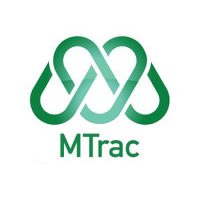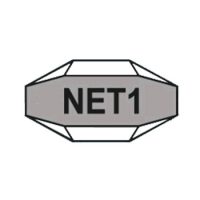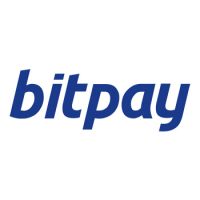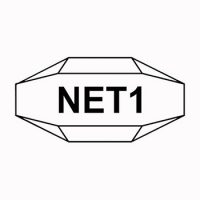Blockchain
The Death of the $2 Trillion Auto Industry Will Come Sooner Than Expected

Tesla is now bigger than Exxon. BlackRock has taken over Wall Street. Even unprofitable, Uber and Lyft are threatening to overtake the $1-trillion auto industry and they’ve only scratched the surface. Now, the worldwide $2-trillion auto industry is next in line for disruption. Mentioned in today’s commentary includes: BlackRock, Inc. (NYSE: BLK), Uber Technologies, Inc. (NYSE: UBER), Facebook, Inc. (NASDAQ: FB), Alphabet Inc. (NASDAQ: GOOGL), Microsoft Corporation (NASDAQ: MSFT).
This is the Fourth Industrial Revolution–kicked into high-speed gear by a global pandemic. And it’s all about tech-driven freedom.
For the auto industry, in particular, it’s a double threat: Tesla is now the most valuable car maker “of all time“. And with combined market caps of some $70 billion, Uber and Lyft are also severely disrupting the giant auto industry.
Tesla is worth almost $225 billion (or quarter of a trillion dollars), while the top three American automakers–GM, Ford and Chrysler–are worth around $70 billion–the same as Uber and Lyft. But while Tesla’s EV threat to the industry is clear, the ride-sharing giants’ business models are broken. Now, they may be about to find themselves on the wrong end of the disruption.
The newest threat to Uber, Lyft and the trillion-dollar personal ownership auto industry comes out of Canada’s “Silicon Valley”. It’s on the right side of history: In lock-step with Tesla’s EVs and BlackRock’s “impact investing” takeover of Wall Street …
Launched in 2019, Facedrive (FD.V) (FDVRF) is leading the evolution of shared mobility–from EV and carbon-offset ride-sharing to acquisition-hungry food delivery, healthcare services and even COVID tracing tech.
It’s got the new business model to lure in big capital that’s tired of the giants’ cash burn, bad press and endless unprofitability. It views shared mobility as much more than a ride: This is about technology, and Facedrive has launched multiple revenue streams that take advantage of the rider relationship. Now, it’s starting to go international.
A series of smart acquisitions and new service launches have positioned it to be a key challenger to the shared mobility throne. But it’s about to get even more exciting, with a government endorsement for high-tech COVID tracing and new partnerships on the boardroom deal table …
Here are 5 reasons to keep a close eye on this burgeoning sector right now:
#1 This Is What Big Capital Wants
There’s a reason BlackRock is blowing Wall Street out of the water right now–sustainable investing. It’s the ethical squeeze of the century because it’s not just about the moral high ground anymore–it’s about making money.
BlackRock (BLK) has now replaced Goldman Sachs to become the most important banking company in the world. BlackRock is all about technology, and all about mitigating risk through sustainable companies. With well over $7.4 trillion in assets under management, and clients in over 100 different countries, it’s safe to say that BlackRock has played a vital role in shifting investors’ perspectives in the ESG field.
And savvy companies are following suit. In fact, where Facedrive launched its coup. Facedrive’s next-gen ride-sharing is the first to offer customers a choice for every ride; whether they want an EV, a hybrid, or a conventional car. Then it offsets CO2 by planting trees along the way.
The Canadian startup has positioned itself to help solve ride-sharing’s environmental problem by changing its footprint, —and aims to do so without sacrificing profit, which Uber has never even made anyway.
Globally each year, plants remove about 25% of the carbon emissions produced by human activities such as burning fossil fuels while a similar amount ends up in the oceans. So, Facedrive is getting back to Mother Nature–and millennials and investors are loving it.
#2 Conscious Healthcare
Facedrive engineered another major coup last month when it launched TraceSCAN, a homegrown Canadian COVID-19 tracing solution and the only viable application that features Bluetooth wearable tech integration. Right off the bat, it partnered with LiUNA–one of the largest labor unions in the world–to help protect the health and safety of its 130,000 members and their families in Canada.
Now, solidified its power as the leader in this space in Canada, with a government support to deploy TraceSCAN.
Not only did Facedrive’s TraceSCAN just get the official endorsement from the Government of Ontario as technology that can effectively help trace coronavirus infections, but the government is encouraging its deployment across all major sites–from Parliament Hill’s major renovation project in Ottawa, to corporate offices, sporting events, healthcare facilities, long-term care facilities and outdoor venues.
#3 Innovative Revenue VS Irresponsible Cash Burn
Facedrive (FD.V) (FDVRF) isn’t just challenging Uber in the ride-sharing space. And it isn’t just the mobile leader of COVID-19 tracing tech in Canada–it’s now challenging the food delivery giants, too.
Uber (UBER) is the de facto leader in this field currently thanks to its Uber Eats branch. And now it’s looking to expand in big ways. Earlier this year, it was prepared to pay a premium for the Grubhub–the delivery service with the biggest US market share. But that deal fell through and now Uber has to settle for potentially taking over the much smaller Postmates.
Facedrive is also pursuing aggressive expansion in this space–but not paying premium prices like Uber has done.
In May, Facedrive entered into a binding term sheet to acquire the assets of Foodora Canada, a subsidiary of giant Delivery Hero–the $20-billion multinational food delivery service. This could turn out to be another major coup for Facedrive because Delivery Hero is one of the best–operating food delivery services in 40 countries and services more than 500,000 restaurants with a brand that doesn’t have the negative baggage of Uber Eats or DoorDash.
This new face of “sharing” is cutting a food delivery acquisition deal for what is expected to be a reasonable price. And it’s acquiring from Delivery Hero–the only company with a good reputation in this business, earning it the moniker of “United Nations of food delivery”. That’s because Delivery Hero spans 28 brands in over 40 countries. And it makes restaurants happy instead of gouging them.
Overnight, Facedrive is set to position itself into the top echelon of Canadian food delivery services. Then targeting international expansion. The winner of this war will likely be the new sharing business model that defies the out-of-control cash burn, broadens the revenue potential and wins the hearts and minds of every stakeholder in the chain, including drivers and restaurants.
#4 International Branding
What millenials know, and what millennials want is this: A company that recognizes that ride-sharing isn’t going to work unless it’s a lifestyle, not just a way to get from Point A to Point B.
It has to offer more, be more convenient, responsible and have a positive impact on the world around one. That’s what the giants just don’t get. They should, because millennial money is big money. Millennials have changed the future of investing.
That old adage that any publicity is good publicity no longer holds water. Bad publicity now resonates with massively powerful shareholder activism.
The most often used phrase about the Uber brand at this point is that it’s a service everyone loves to hate and hates to love. Now, with Facedrive, riders have a choice, and that choice is getting ready to go international.
#5 Where Canada Trumps Silicon Valley
As we’ve already seen in Silicon Valley, tech giants across the board are diving head-first into the sustainability push. Facebook (FB), for its part, has taken an innovative approach in its efforts to reduce its carbon footprint. Its data centers are some of the most resource-efficient on the planet, and it’s become an example for the entire industry. And by the end of the year, it will have 100% of its data centers running on green energy. A massive and ambitious undertaking. But if anyone can do it, it’s Facebook.
Not to be outdone, Google (GOOGL) is jumping on the green bandwagon, as well. It’s focus is on raising the bar for smarter and more efficient use of the world’s limited resources. It is building sustainable, energy-efficient data centers and workplaces. It is also harnessing artificial intelligence to utilize energy more efficiently.
While Google completely rethinks the game for its own operations, it is also creating a completely sustainable supply chain, working with companies around the globe to help them integrate their own sustainable systems.
Microsoft (MSFT)is one of the most innovative and well-known companies within the tech sector, but its Windows platform is the most widely used operating system on the planet. First launched in 1985, Windows has shaped what is expected from a personal home computer.
But Microsoft is appealing to investors for more just its Windows platform. It is diving head first into an entirely new market. With key partnerships utilizing and implementing blockchain technology, the company’s upside could have huge potential as the tech takes off.
Not only has it always been on the cutting edge of innovation, it’s taking a serious stance on the climate crisis. In fact, it’s pushing so hard that it is aiming to be carbon NEGATIVE by 2030. That’s a huge pledge. And if anyone can do it, it’s Microsoft.
But the United States’ crackdown on immigration has driven innovation north of the border. Ontario’s Waterloo “Technology Triangle” is pumping out some of the most innovative new tech these days. And it’s positioned to challenge Silicon Valley in both environmentally conscious and tech driven solutions with bold new startups such as Facedrive, whose Chairman and CEO, Sayan Navaratnam, is all about identifying and running with trends before they become mega. He saw where Uber and Lyft would trip up years before it became clear to everyone else.
That’s a lot of potential revenue streams that Facedrive (FD.V) (FDVRF) is latching onto. In the realm of “shared mobility”, the possibilities are almost endless. Its taking its “people and planet first” business model–the one that is in lockstep with the $30-billion ESG investing trend–international.
By. Michael Drew
** IMPORTANT, BY READING OUR CONTENT YOU EXPLICITLY AGREE TO THE FOLLOWING. PLEASE READ CAREFULLY **
Forward-Looking Statements
This publication contains forward-looking information which is subject to a variety of risks and uncertainties and other factors that could cause actual events or results to differ from those projected in the forward-looking statements. Forward looking statements in this publication include that the demand for ride sharing services will grow, and transportation as a service industry will reach $8 trillion; that the demand for environmentally conscientious ride sharing services companies in particular will grow quickly and take a much larger share of the market; that Facedrive’s TraceScan app will be adopted by other parties including government; that Facedrive’s marketplace will offer many more sustainable goods and services, and grow revenues outside of ride-sharing; that new products co-branded by Bel Air and Facedrive will sell well; that Facedrive can achieve its environmental goals without sacrificing profit; that Facedrive Foods will expand to other regions outside southern Ontario soon and will close its purchase of Foodora; that Facedrive will be able to fund its capital requirements in the near term and long term; and that Facedrive will be able to carry out its business plans. These forward-looking statements are subject to a variety of risks and uncertainties and other factors that could cause actual events or results to differ materially from those projected in the forward-looking information. Risks that could change or prevent these statements from coming to fruition include changing governmental laws and policies; the company’s ability to obtain and retain necessary licensing in each geographical area in which it operates; the success of the company’s expansion activities and whether markets justify additional expansion; the TraceScan app may not be adopted because of better apps offered by competitors or because of expense the ability of the company to attract a sufficient number of drivers to meet the demands of customer riders; the ability of the company to attract drivers who have electric vehicles and hybrid cars; the ability of Facedrive to attract providers of good and services for partnerships on terms acceptable to both parties, and on profitable terms for Facedrive; that the products co-branded by Facedrive may not be as merchantable as expected; that Facedrive does not close the purchase of Foodora and even if it does, the purchase does not bring the customers, partnerships or revenues expected; the ability of the company to keep operating costs and customer charges competitive with other ride-hailing companies; and the company’s ability to continue agreements on affordable terms with existing or new tree planting enterprises in order to retain profits. The forward-looking information contained herein is given as of the date hereof and we assume no responsibility to update or revise such information to reflect new events or circumstances, except as required by law.
Blockchain
Decentralized science can be the next big thing for blockchain utilization
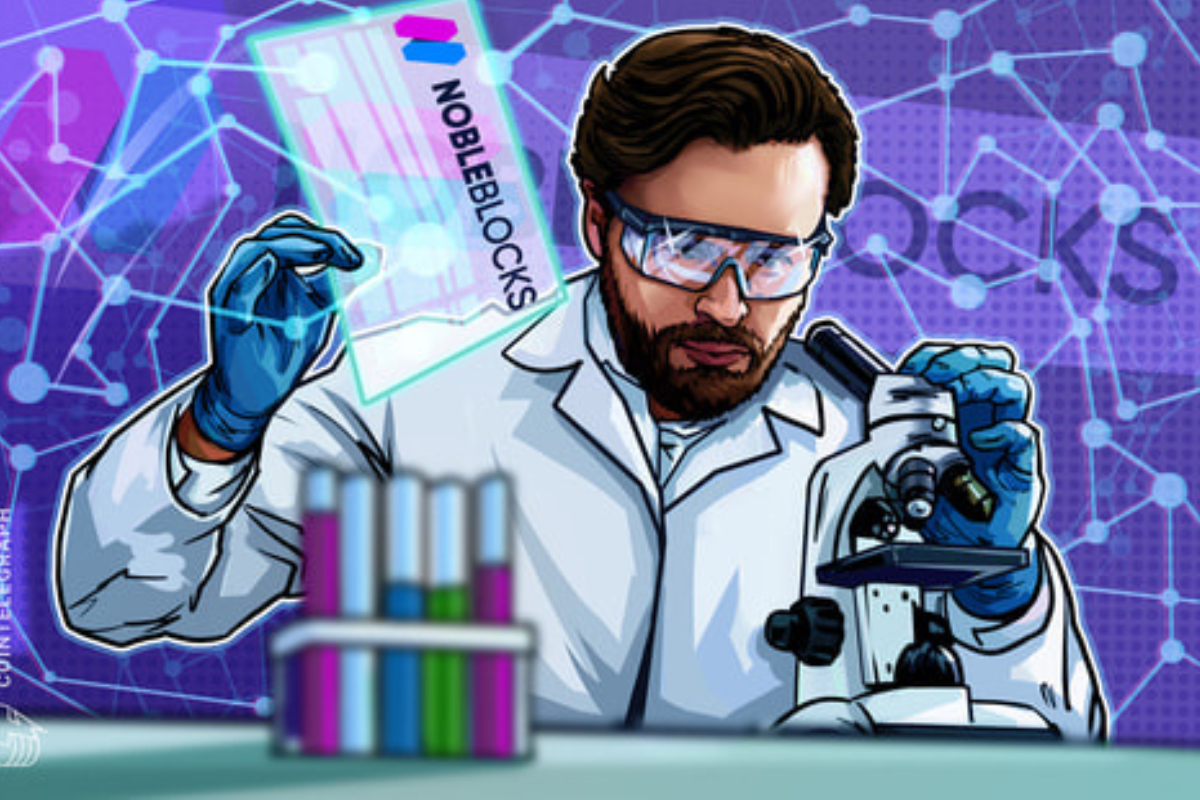
Decentralized science leverages blockchain’s decentralized ledger technology to address common challenges faced by researchers, including data integrity, reproducibility, and collaboration. By recording scientific data and research findings on a tamper-proof blockchain, researchers can ensure the integrity and authenticity of their work, reducing the risk of data manipulation or fraud.
Moreover, blockchain enables transparent and traceable peer review processes, allowing researchers to validate and verify each other’s work more effectively. This enhances the credibility and reliability of scientific publications, fostering trust within the scientific community and among the general public.
Blockchain-based platforms also facilitate greater collaboration and knowledge sharing among researchers, breaking down traditional barriers to access and enabling interdisciplinary collaboration. Through decentralized science platforms, researchers can securely share data, resources, and expertise, accelerating the pace of scientific discovery and innovation.
Despite its potential benefits, decentralized science still faces challenges, including regulatory uncertainties, technological barriers, and resistance to change within the scientific community. However, as blockchain technology continues to evolve and gain acceptance, decentralized science is poised to emerge as a transformative force in scientific research and collaboration.
Source: cointelegraph.com
The post Decentralized science can be the next big thing for blockchain utilization appeared first on HIPTHER Alerts.
Blockchain
How blockchain-based voting can restore trust in the electoral process
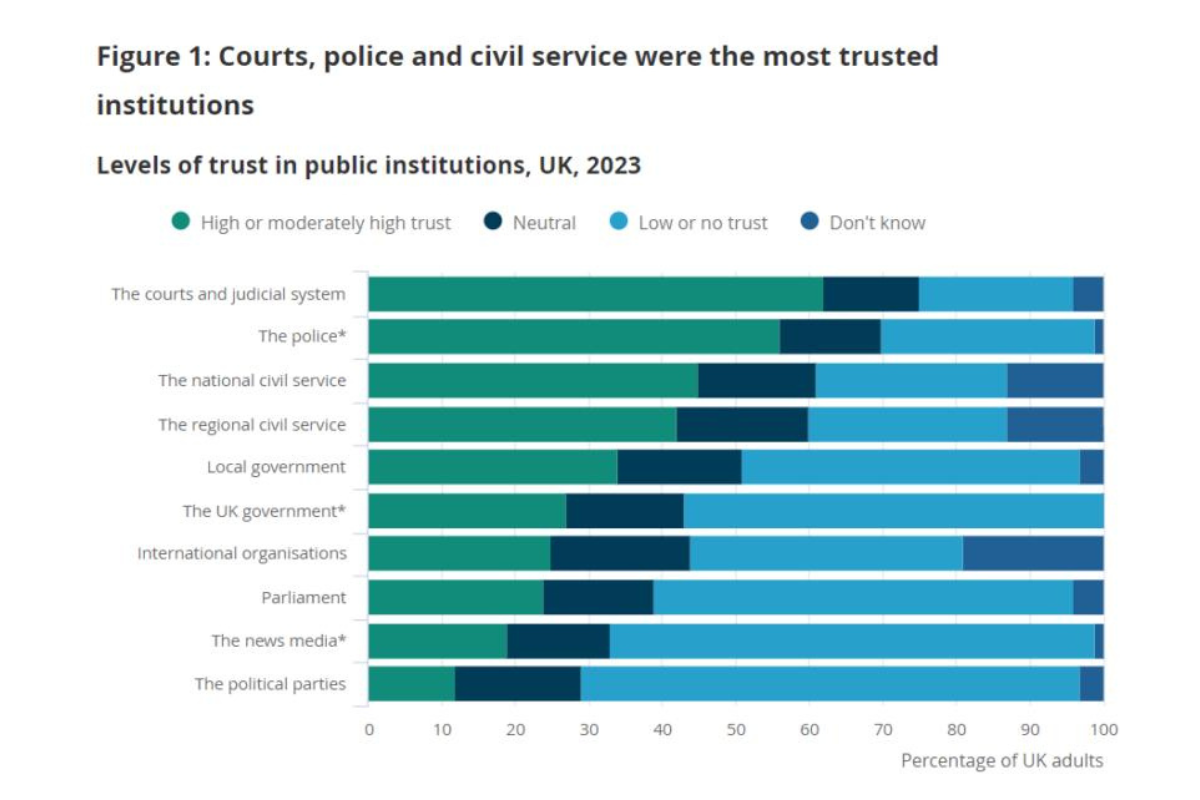
In this article we’re discussing the potential of blockchain-based voting systems to rebuild trust in electoral processes. These systems leverage blockchain technology’s transparency and immutability to address concerns surrounding election integrity and voter fraud.
Blockchain-based voting solutions offer several advantages over traditional methods, including increased transparency, security, and accessibility. By recording votes on a decentralized ledger, blockchain ensures that each vote is securely stored and tamper-proof, reducing the risk of manipulation or fraud.
Moreover, blockchain-based voting systems can enhance voter participation by providing greater accessibility to remote and disenfranchised populations. Through secure digital platforms, voters can cast their ballots from anywhere, reducing barriers to participation and promoting inclusivity.
Despite the potential benefits, the adoption of blockchain-based voting systems faces challenges, including regulatory hurdles and technological limitations. Governments and electoral authorities must navigate these obstacles to implement effective and trustworthy voting solutions.
Overall, the article highlights the transformative potential of blockchain technology in restoring trust and integrity to electoral processes. By embracing innovative voting systems built on blockchain, societies can uphold democratic principles and ensure fair and transparent elections.
Source: tradingview.com
The post How blockchain-based voting can restore trust in the electoral process appeared first on HIPTHER Alerts.
Blockchain
Binance Integrates USD Coin (USDC) on CELO Network

Binance has announced the integration of USD Coin (USDC) onto the Celo network, marking a significant step forward in expanding the utility and accessibility of USDC within the cryptocurrency ecosystem.
This integration enables users to seamlessly transfer USDC tokens across the Celo network, leveraging its high-speed and low-cost transactions. By integrating USDC on Celo, Binance aims to enhance the interoperability and accessibility of USDC, making it easier for users to engage with decentralized finance (DeFi) applications and access financial services on the Celo network.
USDC is a stablecoin pegged to the US dollar, offering users a reliable and transparent means of transacting value on the blockchain. With its integration on the Celo network, USDC gains access to Celo’s ecosystem of decentralized applications (DApps) and services, further expanding its utility and adoption.
The collaboration between Binance, USDC, and Celo underscores the growing importance of interoperability and cross-chain compatibility within the cryptocurrency space. By leveraging the strengths of each network, users can benefit from enhanced liquidity, accessibility, and functionality when using USDC on the Celo network.
Overall, the integration of USDC on the Celo network represents a significant milestone in advancing the capabilities of stablecoins and decentralized finance, providing users with greater flexibility and choice in managing their digital assets.
Source: blockchain.news
The post Binance Integrates USD Coin (USDC) on CELO Network appeared first on HIPTHER Alerts.
-

 Blockchain Press Releases7 days ago
Blockchain Press Releases7 days agoCanaan Shines at Blockchain Life 2024 in Dubai
-

 Blockchain6 days ago
Blockchain6 days agoPhoenix Group Engages BHM Capital as Liquidity Provider to Boost ADX Liquidity and Enhance Market Dynamics
-

 Blockchain6 days ago
Blockchain6 days agoCrypto fans count down to bitcoin’s ‘halving’
-

 Blockchain6 days ago
Blockchain6 days agoTether USDT stablecoin goes live on TON blockchain
-

 Blockchain Press Releases6 days ago
Blockchain Press Releases6 days agoDWF Labs joins the Klaytn Governance Council
-

 Blockchain Press Releases2 days ago
Blockchain Press Releases2 days agoDeFi Lens builds advanced Generative AI for Technical Analysis
-

 Blockchain6 days ago
Blockchain6 days agoCrypto and Blockchain Weave Deeper Into the Biometrics Space – Identity News Digest
-

 Blockchain7 days ago
Blockchain7 days agoAlpha Transform Holdings Releases March Report on ASC AI Index


















